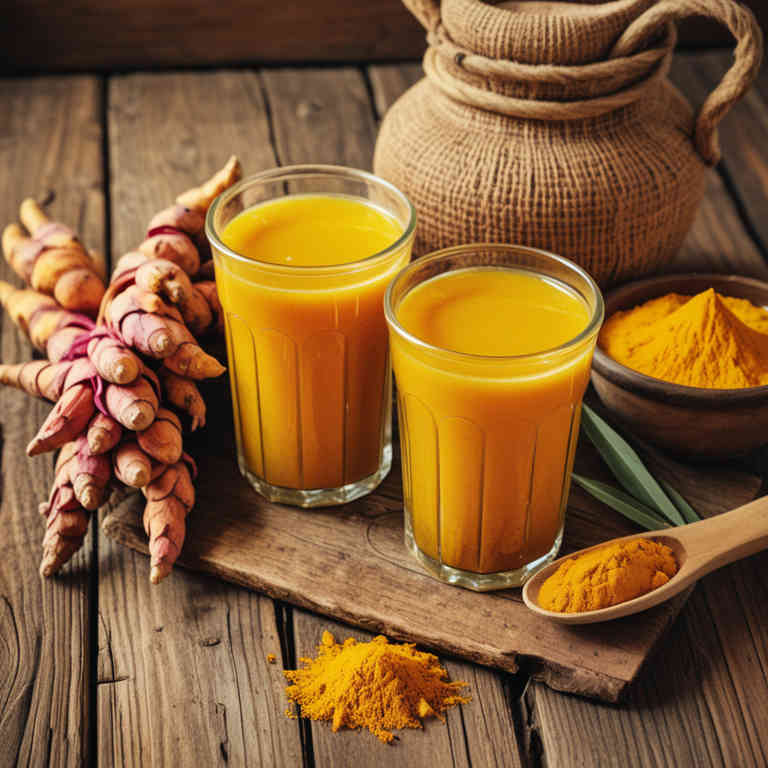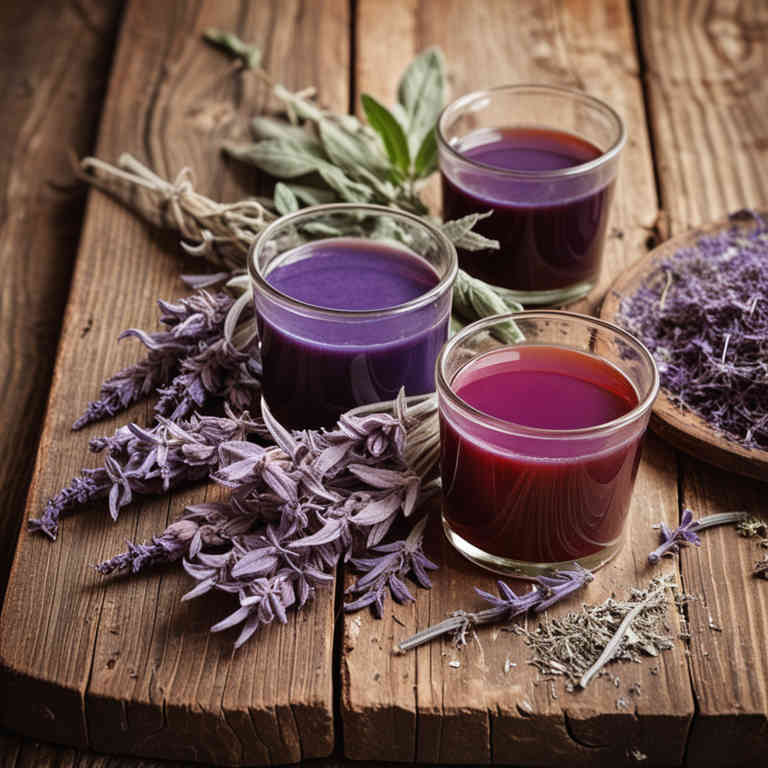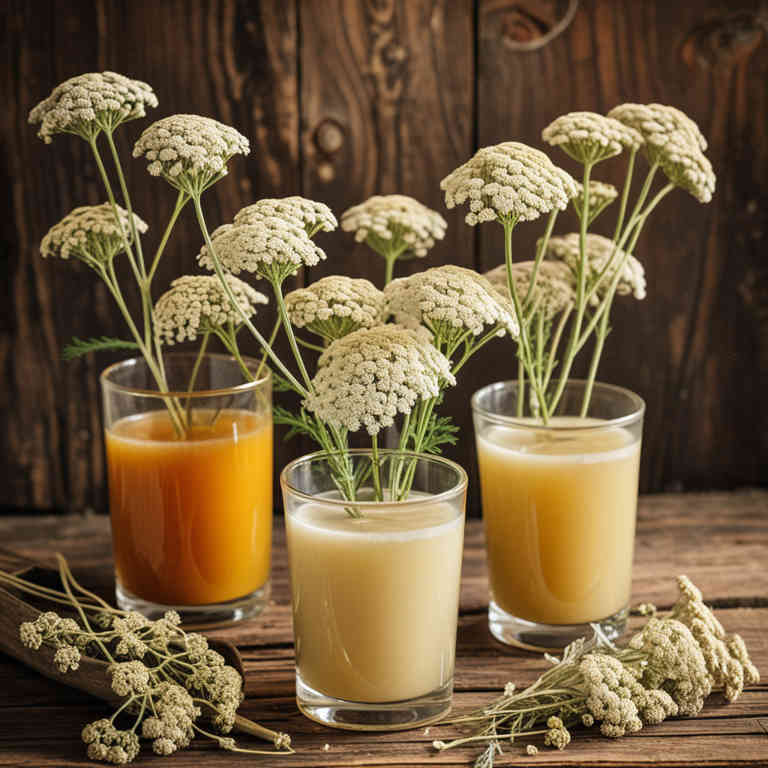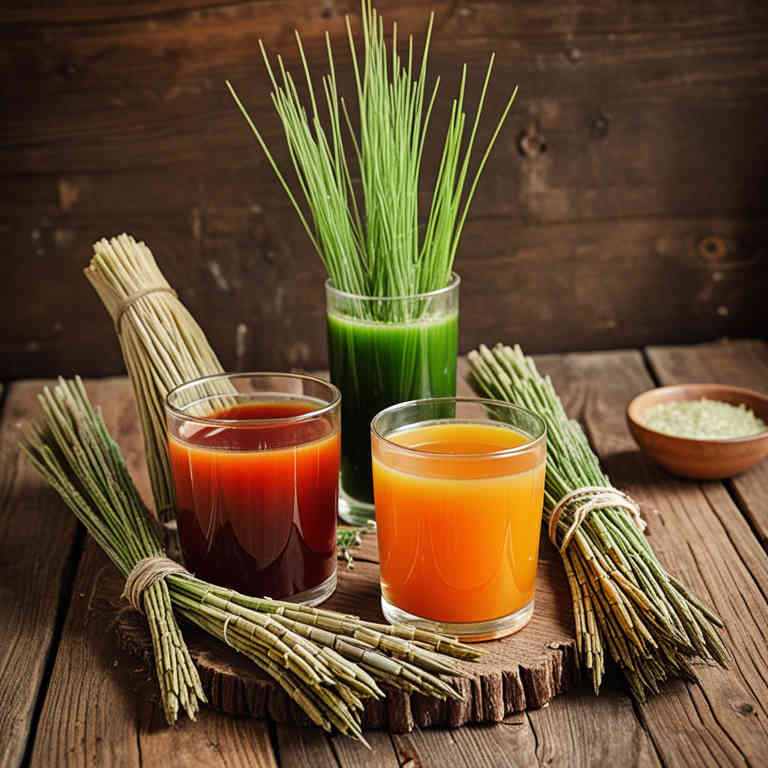10 Best Herbal Juices For Leg Pain

Herbal juices can be a natural remedy for leg pain, offering anti-inflammatory and pain-relieving properties through the inclusion of ingredients like ginger, turmeric, and celery.
These juices work by reducing inflammation and improving circulation, which can alleviate discomfort associated with conditions such as arthritis or varicose veins. Some herbs, such as willow bark and boswellia, have been traditionally used to ease muscle pain and stiffness, making them beneficial when incorporated into daily juice blends. However, it's important to consult with a healthcare professional before using herbal juices, especially if you have underlying health conditions or are taking medications.
When prepared properly and consumed regularly, herbal juices can serve as a complementary approach to managing leg pain in a holistic manner.
FREE Herb Drying Checklist
How to make sure every batch retains maximum flavor, color, and aroma without the risk of mold or over-drying. Eliminate guesswork and trial-and-error, making herb drying faster, easier, and more efficient every time.
Table of Contents
1. Zingiber officinale

Zingiber officinale, commonly known as ginger, has been traditionally used for its anti-inflammatory and analgesic properties, making it a popular ingredient in herbal juices for alleviating leg pain.
The active compounds in ginger, such as gingerol and shogaol, help reduce inflammation and improve blood circulation, which can be beneficial for conditions like arthritis or muscle soreness in the legs. Incorporating fresh ginger juice into a daily routine may help ease discomfort and promote faster recovery from physical strain or injury. Many people prepare ginger juice by combining fresh ginger root with lemon, honey, or other herbs to enhance flavor and therapeutic effects.
While ginger is generally safe, it is advisable to consult a healthcare professional before using it as a remedy, especially for chronic or severe leg pain.
2. Curcuma longa

Curcuma longa, commonly known as turmeric, contains curcumin, a compound known for its anti-inflammatory and antioxidant properties.
Herbal juices made from fresh turmeric root can help alleviate leg pain by reducing inflammation and improving circulation. These juices are often blended with other beneficial ingredients like ginger, lemon, and black pepper to enhance absorption and flavor. Regular consumption of turmeric herbal juice may provide natural relief for conditions such as arthritis or muscle soreness in the legs.
However, it is advisable to consult a healthcare professional before incorporating turmeric into a treatment regimen for chronic pain.
3. Salvia officinalis

Salvia officinalis, commonly known as sage, has been traditionally used in herbal medicine for its potential therapeutic properties.
While it is more widely recognized for its benefits in digestive and respiratory health, some studies suggest that sage may also support circulation and reduce inflammation, which could be beneficial for individuals experiencing leg pain. Herbal juices made from fresh or dried sage leaves can be consumed internally to harness these properties, though they should be used with caution and under the guidance of a healthcare professional. The anti-inflammatory and antioxidant compounds in sage may help alleviate discomfort associated with conditions like varicose veins or peripheral neuropathy.
However, more research is needed to fully understand its efficacy and safety for treating leg pain specifically.
4. Achillea millefolium

Achillea millefolium, commonly known as yarrow, has been traditionally used for its potential therapeutic properties, including its ability to alleviate leg pain.
Herbal juices made from yarrow may help reduce inflammation and improve circulation, which can be beneficial for individuals suffering from conditions like varicose veins or muscle soreness. The anti-inflammatory and antispasmodic compounds in yarrow may contribute to its effectiveness in easing discomfort associated with leg pain. However, it is important to consult a healthcare professional before using yarrow juice, as it may interact with certain medications or have side effects for some individuals.
While some people report relief from leg pain using yarrow-based remedies, more scientific research is needed to fully understand its efficacy and safety.
5. Urtica dioica

Urtica dioica, commonly known as stinging nettle, has been traditionally used for its potential health benefits, including relief from leg pain.
When prepared as a herbal juice, stinging nettle is believed to support circulation and reduce inflammation, which may help alleviate discomfort in the legs. The juice is typically made by juicing fresh nettle leaves, which are rich in vitamins, minerals, and antioxidants. Some people use it as a natural alternative to conventional pain relievers, though it is important to consult a healthcare professional before use.
While preliminary studies suggest possible benefits, more research is needed to fully understand its efficacy for leg pain.
6. Equisetum arvense

Equisetum arvense, commonly known as field horsetail, has been traditionally used in herbal medicine for its potential benefits in alleviating leg pain.
The plant is rich in silica and other minerals, which are believed to support joint health and reduce inflammation. Herbal juices made from Equisetum arvense may help improve circulation and reduce swelling in the legs, making them a popular remedy for conditions like varicose veins or muscle strain. However, it is important to note that while some studies suggest possible benefits, more scientific research is needed to confirm its efficacy.
As with any herbal remedy, it is advisable to consult a healthcare professional before using Equisetum arvense, especially if you have underlying health conditions or are taking other medications.
7. Cnicus benedictus

Cnicus benedictus, commonly known as St. Benedict's thistle, has been traditionally used in herbal medicine to address various ailments, including leg pain.
This herb is believed to possess anti-inflammatory and analgesic properties that may help reduce discomfort and swelling in the legs. When prepared as a herbal juice, Cnicus benedictus can be consumed internally to support circulation and ease muscle tension. Its use is often combined with other herbs to enhance its therapeutic effects.
However, it is important to consult a healthcare professional before using it, especially for individuals with existing medical conditions or those taking medications.
8. Vitis vinifera

Vitis vinifera, commonly known as the grape vine, has been traditionally used for its potential health benefits, including the relief of leg pain.
Herbal juices made from Vitis vinifera, particularly those rich in resveratrol and other polyphenols, may help reduce inflammation and improve circulation, which can alleviate discomfort in the legs. These natural remedies are often sought by individuals suffering from conditions like varicose veins, restless leg syndrome, or peripheral neuropathy. While scientific evidence supporting their efficacy is limited, many users report positive effects when consuming these juices as part of a holistic wellness routine.
As with any herbal remedy, it is advisable to consult a healthcare professional before incorporating Vitis vinifera juices into a treatment plan for leg pain.
9. Piper nigrum

Piper nigrum, commonly known as black pepper, contains compounds like piperine that may help reduce inflammation and improve circulation, potentially offering relief for leg pain.
While there is limited scientific research specifically on black pepper herbal juices for leg pain, some traditional practices suggest that its anti-inflammatory properties could support overall musculoskeletal health. When consumed as part of a herbal juice, black pepper may complement other ingredients like ginger or turmeric, enhancing its potential benefits. However, it is important to consult with a healthcare professional before using black pepper juice, especially for chronic or severe leg pain.
Overall, while black pepper may contribute to general wellness, it should not replace conventional treatments for leg pain without medical guidance.
10. Silybum marianum

Silybum marianum, also known as milk thistle, is a herbal remedy that has been traditionally used for its potential health benefits, including support for liver function.
While it is commonly associated with liver health, some anecdotal evidence suggests that silybum marianum may also help alleviate symptoms of leg pain, possibly due to its anti-inflammatory and antioxidant properties. Herbal juices made from silybum marianum are believed to promote circulation and reduce inflammation in the muscles and joints, which could be beneficial for individuals suffering from conditions like restless leg syndrome or varicose veins. However, it is important to consult with a healthcare professional before using silybum marianum, as it may interact with certain medications or have side effects in some individuals.
Despite its popularity in alternative medicine, scientific research on its effectiveness for leg pain remains limited, and more studies are needed to confirm its benefits.